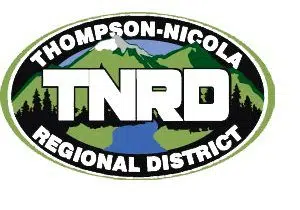
Editors note: The contents of this story may be triggering to some readers. A list of resources is listed below.
The discovery of a juvenile rib bone near a former apple orchard on the grounds of the Kamloops Residential School helped researchers find what’s believed to the remains of hundreds of children.
That’s according to Dr. Sarah Beaulieu, of the University of Fraser Valley, who led the ground-penetrating radar work on about two acres of land.
She says a juvenile tooth that was also found later helped narrow the initial search area back in May.
“A juvenile tooth is not an indicator of loss of life but given both discoveries, the possibility should not be discounted,” she said.
“As a preliminary assessment, this project sought to first ascertain the likelihood of human burials within the study area. Second, begin a preliminary assessment of the possible locations of specific burials, and finally develop steps to further this work in order to confirm the number and location of possible burials.”
Beaulieu says the total number of people potentially buried at the Kamloops Residential School is not yet known.
At the time, Tk’emlúps indicated there were 215 unmarked graves found. Speaking today, Beaulieu said that 200 “targets of interest,” or probable graves were identified by ground penetrating radar.
“My report identifies some of these probable locations. There remain over 160 acres that still require surveying before these numbers can be finalized,” she added. “I must indicate that this is the first part of an investigation with a knowing and oral histories that tell us there remains much more work to be done.”
The Kamloops Indian Residential School was one of the biggest in Canada, opening its doors in 1890 and not closing until 1976. It was run by the Roman Catholic Church until 1969, at which point it was taken over by the federal government until it was closed in 1976.
Kukpi7 Rosanne Casimir says the next steps will be to look at student records to try and identify the remains found at the site.
For that to happen, she says there needs to a be a full disclosure of records from the government and the Missionary Oblates of Mary Immaculate which ran the school for most of its existence.
“We are here today to honour the missing children who have experienced unthinkable circumstances leading to their death and who’s remains were places in unmarked graves,” Casimir said. “We are mapping a way forward to bring peace to those missing children, their families, and their communities.”
“We are not here for retaliation. We are here for truth-telling.”
Casimir says the band will follow the evidence and science in moving forward, while also listening to what survivors of the residential school system have to say.
“This is heavy truth,” she added. “It has been referred to as a historic dark chapter but Indigenous people are very much alive with the repercussions that they’re living today.”
Moving forward, Beaulieu says only exhumation of the graves will verify the findings but she notes she is confident in them.
“These results are as conclusive as GPR [ground-penetrating radar] allows,” she said. “Only forensic investigation with excavation will provide definitive results.”
Evelyn Camille, an 82-year-old survivor of the Kamloops Indian Residential School spent 10 years at the school. She told the crowd gathered at the presentation of the findings, that children were told they could send letters home to the families, but the letters were censored.
She says the residential schools were built specifically to “take the Indian out of us, to take away our culture, language and way of life.”
“Broken up families still happen today with the Child and Family Services,” Camillie said. “We have to end that system and be responsible for our own children in our communities. That was how it was and that is how it should be.”
Camille says she knows many children were lost in the South Thompson River after they ran away from the school and tried to get home.
“Many tried to run away from these I don’t want to call them schools because I didn’t learn anything there. When I took the college entrance program, I had Grade 4 level,” she said. “All we did was cook and clean and we starved…and that’s only part of our survival in residential schools.”
While many have called for the grave sites to be excavated, Camille said she wants the site to be left undisturbed.
“Yes, there may have to be some studies that have to be done…but what good are those studies going to do for us, for an individuals, for me?” she said.
Support services for residential school survivors in British Columbia:
* The KUU-US Crisis Line Society provides a 24-hour, provincewide Indigenous crisis line for Indigenous peoples in B.C. Adults, call 250 723-4050. Children and youth, call 250 723-2040. Toll-free: 1 800 588-8717
* First Nations and Inuit Hope for Wellness Help Line for Indigenous people across Canada toll-free 1 855 242-3310 or chat online: https://www.hopeforwellness.ca/
* The Métis Crisis Line for Métis people in B.C., available 24 hours a day at 1 833 MétisBC: 1 833 638-4722
* Tsow Tun Le Lum for Indigenous peoples in B.C., phone: 1 888 403-3123
* Indian Residential School Survivors Society, phone: 1 800 721-0066 or 604 985-4464
* 24-Hour National Crisis Line for residential school survivors and others affected: 1 866 925-4419














